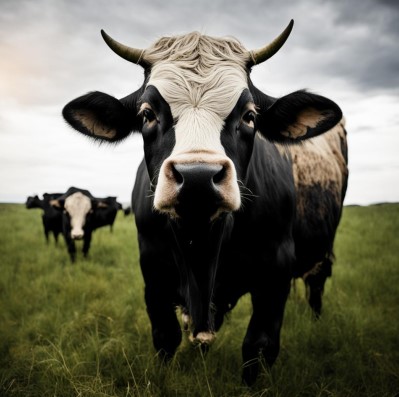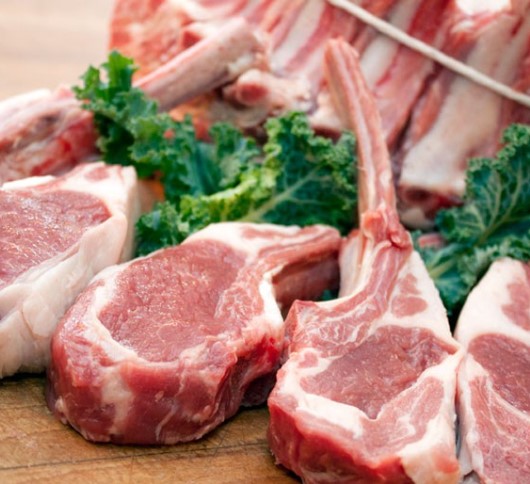In Buryatia slaughtered for meat

Expensive logistics
This story began back in 2022, when the Minister of Agriculture of RUSSIA Dmitry Patrushev signed an order banning the slaughter of livestock in private farms from September 1, 2022. Since that time, livestock slaughter can only be carried out in specialized slaughterhouses equipped with everything necessary. Everything was explained by the need to ensure the veterinary and sanitary quality of MEAT supplied to the shelves.
The order was clearly to the benefit of large Russian agricultural holdings and meat processing plants, which already had specialized slaughterhouses. And private traders had to spend money on the purchase of new equipment.
Meanwhile, in Buryatia, the implementation of the order was complicated by two of our traditional troubles: unpreparedness for rapid adaptation and bad roads.
Firstly, no one took care in advance to create a sufficient number of specialized slaughterhouses in the region. According to the Office of the ROSSELKHOZNADZOR for the Irkutsk region and Buryatia, as of March 1, 2023, only 28 slaughterhouses were opened in the republic. Of which the lion's share falls on Ulan-Ude and suburban areas where meat processing enterprises are located. In most other areas, there is basically only one specialized slaughtering station each.
Accordingly, farmers are forced to first take the bulls to the region, slaughter them there, and only then transport them for sale, as a rule, to Ulan-Ude.
- We have only one slaughter point in the district center in the Bichursky district, at first I bring a live bull there, I pay 3.5 thousand for slaughter and cooling. The next day I have to take an already clean car to pick up the carcass. Moreover, there are no guarantees that it will be the carcass of my bull, no, the weight after slaughter and cutting changes. And only after that I take this meat to the market in Ulan-Ude, - says a local farmer. - Naturally, taking into account such expenses of money, fuel and time (about 8% extra), both I and other private traders of the Bichursky district slaughtered cattle themselves and took them to the Ulan-Ude market. Before that, having received certificates from local veterinarians about the veterinary safety of carcasses.
Further, according to the farmer, the veterinary service of the Central Market once again examined the meat in its laboratory and it came to the shelves.
The rules have changed
But this effective and safe scheme worked out for decades worked only until recently. Last week, farmers in the districts began to receive notifications in messengers from municipalities that from April 15, the veterinary service will stop issuing certificates for meat that comes in addition to specialized
slaughterhouses.
This is due to the fact that a complaint was filed against the veterinary service in connection with the violation of the 269th Order of the Ministry of Agriculture and Food of Russia. A one-month deadline has been set until April 15, 2023 to bring everything into line and stop the supply of such meat to the markets.
The Department of Veterinary Medicine in Buryatia commented on this information from the field as follows: “In accordance with the order of the Ministry of Agriculture of Russia dated April 28, 2022 No. 269, the slaughter of animals whose meat is sent for further sale should be carried out at slaughterhouses. To date, there are 28 slaughterhouses on the territory of the republic, and work is underway to organize other places for slaughtering animals. The slaughter of animals is carried out under the strict control of the veterinary service, the products undergo all the necessary laboratory tests to confirm safety and are accompanied by veterinary accompanying documents. At the same time, it should be noted that the transition to new slaughter requirements, according to veterinary legislation, is inevitable in the near future,
At the Central Collective Farm Market of Ulan-Ude, the news about the upcoming changes in the sale of meat was received with alarm.
- Even now the supply of meat to the market is reduced and the price of beef reaches 700 rubles. I think that if they ban the supply of meat to the market from private farmsteads, then private traders will either include additional costs for slaughter and transportation in wholesale prices, or reduce the supply to our market, ”complained one of the sellers of the market.
According to him, today more and more farmers, who are not satisfied with the above administrative obstacles, give live weight bulls and rams to nonresident buyers from the Irkutsk region and the Far Eastern Federal District.
In April, due to new requirements, the market may face a shortage of meat, since about 90% comes from farmers and private backyards.
- Prices for beef in the meat markets of Ulan-Ude will increase in April-May. The only question is, will this increase lead to an increase in the cost of meat in supermarkets? Indeed, today they determine the general level of prices for meat products, - says economist Anatoly Dumnov.
So far, prices for meat products in Ulan-Ude supermarkets are noticeably lower than in the markets. However, farm products are fresher and more environmentally friendly.
It can be added that, according to the Ministry of Agriculture and Food of the Republic of Belarus, in 2022, the provision of meat in Buryatia was at a stable level and amounted to 68%.
At the same time, what will happen to the meat counters is still unclear. After all, any administrative intervention in the process of trade in a hot commodity often leads to only one thing - a decrease in competition and an additional increase in prices.
Read together with it:
- Miratorg's 15th Anniversary: The Meat Retail Leader Celebrates Its AnniversarySince its founding, Miratorg has sold over 4 million tons of MEAT products and created approximately 2,000 jobs. Its branded stores employ meat experts who help customers select the best products and conduct master classes. The chain's assortment includes not only its own meat but also a variety of unique products from RUSSIA and abroad, including a premium wine collection curated by a sommelier. ...
- О самых распространенных причинах пожаров рассказали в МЧС2 октября, Минск. О самых распространенных причинах пожаров рассказал начальник главного управления надзора и профилактики МЧС Дмитрий Турчин на "Предупреждение чрезвычайных ситуаций в осенне-зимний период. Профилактика пожаров и гибели людей от них", которая прошла в БЕЛТА. "В республике наблюдается рост количества пожаров на 7,7%, и на 1......





















































